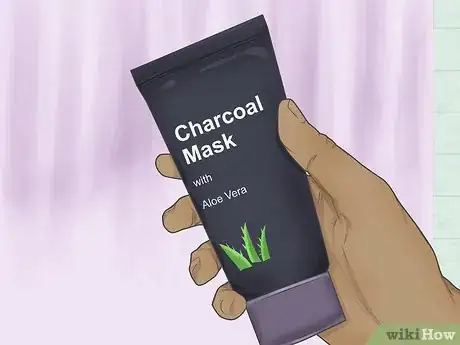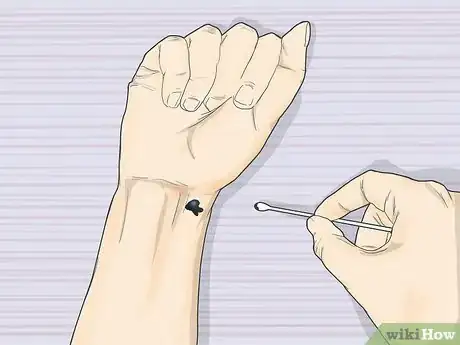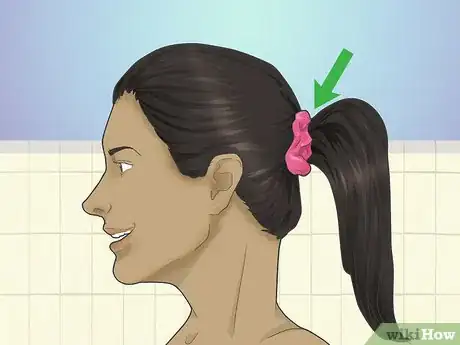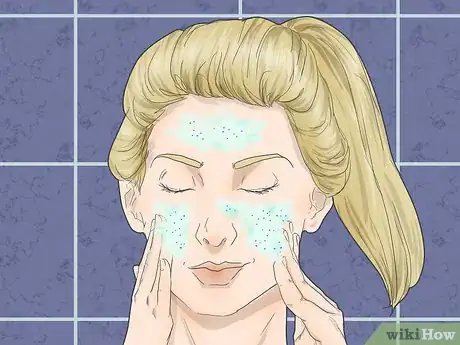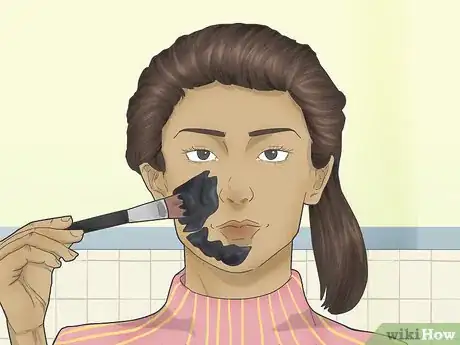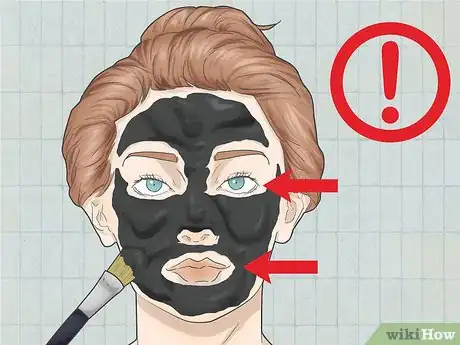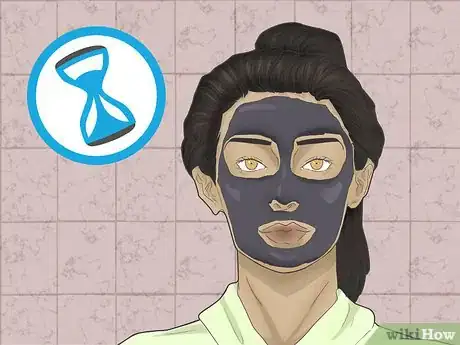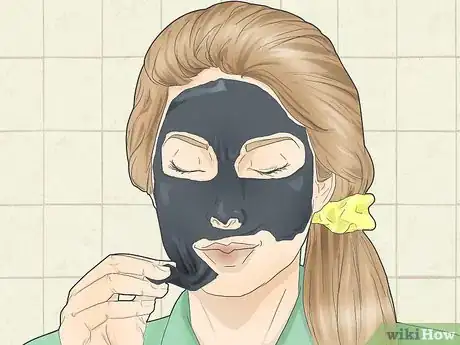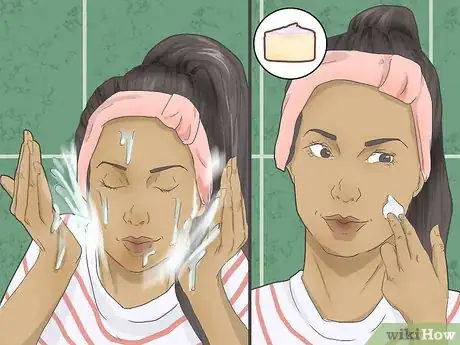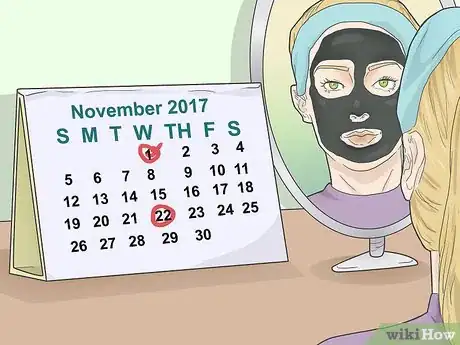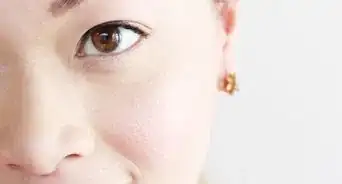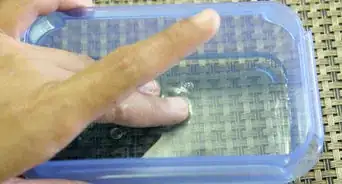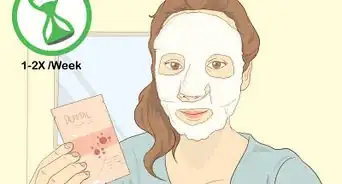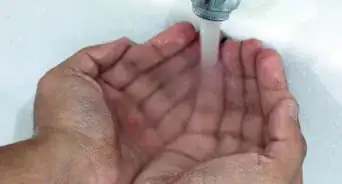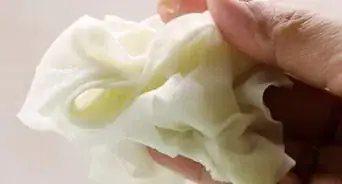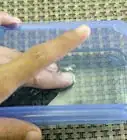This article was co-authored by Joanna Kula and by wikiHow staff writer, Jessica Gibson. Joanna Kula is a Licensed Esthetician, Owner and Founder of Skin Devotee Facial Studio in Philadelphia. With over 10 years of experience in skincare, Joanna specializes in transformative facial treatments to help clients achieve a lifetime of healthy, beautiful, and radiant skin. She is also a contributing author for the prestigious Les Nouvelles Esthetiques & Spa magazine and has been featured in a number of magazines including InStyle.
There are 7 references cited in this article, which can be found at the bottom of the page.
This article has been viewed 306,702 times.
If you've tried everything to treat your blemish-prone or oily skin, try a charcoal mask! Once you've tested your skin for a reaction, apply the mask to blemish-prone parts of your face and let the mask dry. Slowly peel off the mask before you wash and moisturize your skin.
Steps
Preparing Your Face For the Charcoal Mask
-
1Select a high-quality charcoal mask. Buy a charcoal mask from a well-known skincare or makeup brand. Look for charcoal masks that contain activated charcoal, soothing agents (such as aloe vera), and essential oils that can calm the skin.[1]
- If you choose to make your own homemade charcoal mask, avoid using superglue. Superglue contains ingredients that can cause the mask to harden, which will damage your skin when you remove it.
-
2Test your skin for a reaction. Whether you're mixing your charcoal mask or purchasing a mask mixture, check your skin for allergic reactions or irritation before you apply it to your face. Apply a little of the mask onto your cheek or the underside of your wrist. Wait 10 minutes and check for signs of irritation.[2]
- Signs of allergy or irritation include redness, swelling, hives, or itchiness.
Advertisement -
3Tie your hair back, if necessary. If you're concerned that your hair might swing into your face while you have the mask on, use a hair tie to pull it back. This will prevent your hair from sticking to the charcoal mask.
-
4
Applying the Charcoal Mask to Your Face
-
1Spread the charcoal mask on your face. Squirt a quarter-sized amount of the mask into a small bowl. Dip a clean brush into the mixture and spread it evenly across your skin. You can apply it over your face or just on blemish-prone areas. Consider spreading it on your t-zone (between your nose and forehead) if you have acne or blackheads.[5]
- You can use a wide, flat foundation brush or one made specifically for applying masks. If you don't have a brush, you can use clean fingertips to apply the mask.
- Try to be as gentle as you can when you spread the charcoal mask on blemish-prone areas to avoid irritation.
-
2Avoid spreading the mask near your eyes and lips. Because the skin around your eyes and lips is delicate, don't apply the charcoal mask to them. Apply the mask while you're standing in front of a mirror. This way you can see exactly where you're spreading the mask.[6]
-
3Wait for 7 to 10 minutes. The mask should dry completely and it will probably feel tight or itchy on your skin. If the mask begins to feel uncomfortable or painful, you should wash it off without waiting for the full 10 minutes to pass.[7]
-
4Peel off the charcoal mask. Start at the bottom of the mask and slowly peel upwards towards the top of your face. If you only applied the mask to your t-zone, you can peel near the sides of your nose and pull up towards your forehead.[8]
-
5Wash and moisturize after you use the mask. You might notice small bits of the black charcoal mask left on your face. Wash your skin with a gentle cleanser and rinse it off with cool water. Apply a gentle moisturizer that won't clog your pores and let your skin air dry.[9]
-
6Use a charcoal mask every 2 weeks or less. To limit skin irritation, consider using the charcoal mask just when you have zits or blemishes. Because the charcoal mask will remove the topmost layer of skin and hair from your face, you should wait at least 2 weeks before doing another charcoal mask.[10]
- If you have eczema or sensitive skin, avoid using charcoal masks, which could damage your skin.
Expert Q&A
Did you know you can get expert answers for this article?
Unlock expert answers by supporting wikiHow
-
QuestionDo wash-off charcoal masks work?
 Joanna KulaJoanna Kula is a Licensed Esthetician, Owner and Founder of Skin Devotee Facial Studio in Philadelphia. With over 10 years of experience in skincare, Joanna specializes in transformative facial treatments to help clients achieve a lifetime of healthy, beautiful, and radiant skin. She is also a contributing author for the prestigious Les Nouvelles Esthetiques & Spa magazine and has been featured in a number of magazines including InStyle.
Joanna KulaJoanna Kula is a Licensed Esthetician, Owner and Founder of Skin Devotee Facial Studio in Philadelphia. With over 10 years of experience in skincare, Joanna specializes in transformative facial treatments to help clients achieve a lifetime of healthy, beautiful, and radiant skin. She is also a contributing author for the prestigious Les Nouvelles Esthetiques & Spa magazine and has been featured in a number of magazines including InStyle.
Licensed Esthetician
-
QuestionCan charcoal masks remove blackheads and facial hairs?
 Joanna KulaJoanna Kula is a Licensed Esthetician, Owner and Founder of Skin Devotee Facial Studio in Philadelphia. With over 10 years of experience in skincare, Joanna specializes in transformative facial treatments to help clients achieve a lifetime of healthy, beautiful, and radiant skin. She is also a contributing author for the prestigious Les Nouvelles Esthetiques & Spa magazine and has been featured in a number of magazines including InStyle.
Joanna KulaJoanna Kula is a Licensed Esthetician, Owner and Founder of Skin Devotee Facial Studio in Philadelphia. With over 10 years of experience in skincare, Joanna specializes in transformative facial treatments to help clients achieve a lifetime of healthy, beautiful, and radiant skin. She is also a contributing author for the prestigious Les Nouvelles Esthetiques & Spa magazine and has been featured in a number of magazines including InStyle.
Licensed Esthetician
-
QuestionWill a charcoal mask make my face less red and puffy?
 Joanna KulaJoanna Kula is a Licensed Esthetician, Owner and Founder of Skin Devotee Facial Studio in Philadelphia. With over 10 years of experience in skincare, Joanna specializes in transformative facial treatments to help clients achieve a lifetime of healthy, beautiful, and radiant skin. She is also a contributing author for the prestigious Les Nouvelles Esthetiques & Spa magazine and has been featured in a number of magazines including InStyle.
Joanna KulaJoanna Kula is a Licensed Esthetician, Owner and Founder of Skin Devotee Facial Studio in Philadelphia. With over 10 years of experience in skincare, Joanna specializes in transformative facial treatments to help clients achieve a lifetime of healthy, beautiful, and radiant skin. She is also a contributing author for the prestigious Les Nouvelles Esthetiques & Spa magazine and has been featured in a number of magazines including InStyle.
Licensed Esthetician
Things You'll Need
- Small bowl
- Makeup brush
- Charcoal mask
- Gentle cleanser
- Facial moisturizer
- Mild exfoliant
- Hair tie
References
- ↑ http://www.scmp.com/lifestyle/health-beauty/article/2094599/can-charcoal-peel-masks-damage-your-skin-if-used-too-often
- ↑ https://bodyunburdened.com/diy-all-natural-blackhead-busting-blackout-mask/
- ↑ Joanna Kula. Skincare Specialist. Expert Interview.9 July 2019.
- ↑ http://beverlyhillsmd.com/face-masks-using-right-ways/
- ↑ http://www.instyle.com/news/face-mask-brushes
- ↑ https://bodyunburdened.com/diy-all-natural-blackhead-busting-blackout-mask/
- ↑ https://bodyunburdened.com/diy-all-natural-blackhead-busting-blackout-mask/
- ↑ https://www.glossybox.co.uk/magazine/2017/06/07/peel-off-charcoal-face-masks/
- ↑ http://www.health.com/beauty/charcoal-face-mask-peel-safe-for-skin
About This Article
Before you apply a charcoal mask to your face, test your skin for a reaction by putting a small dab on the inside of your wrist and waiting 10 minutes. While you wait, wash and exfoliate your face. If you don't have a reaction after 10 minutes, squeeze some of the charcoal mask into a bowl and use a clean brush to brush it onto your face, making sure not to get it close to your eyes. Let it sit on your face for 7-10 minutes and then peel off the mask, which should be dried. Then, wash your face and enjoy your healthy glow. To learn how to tell if whether a charcoal mask is high quality, read on!
